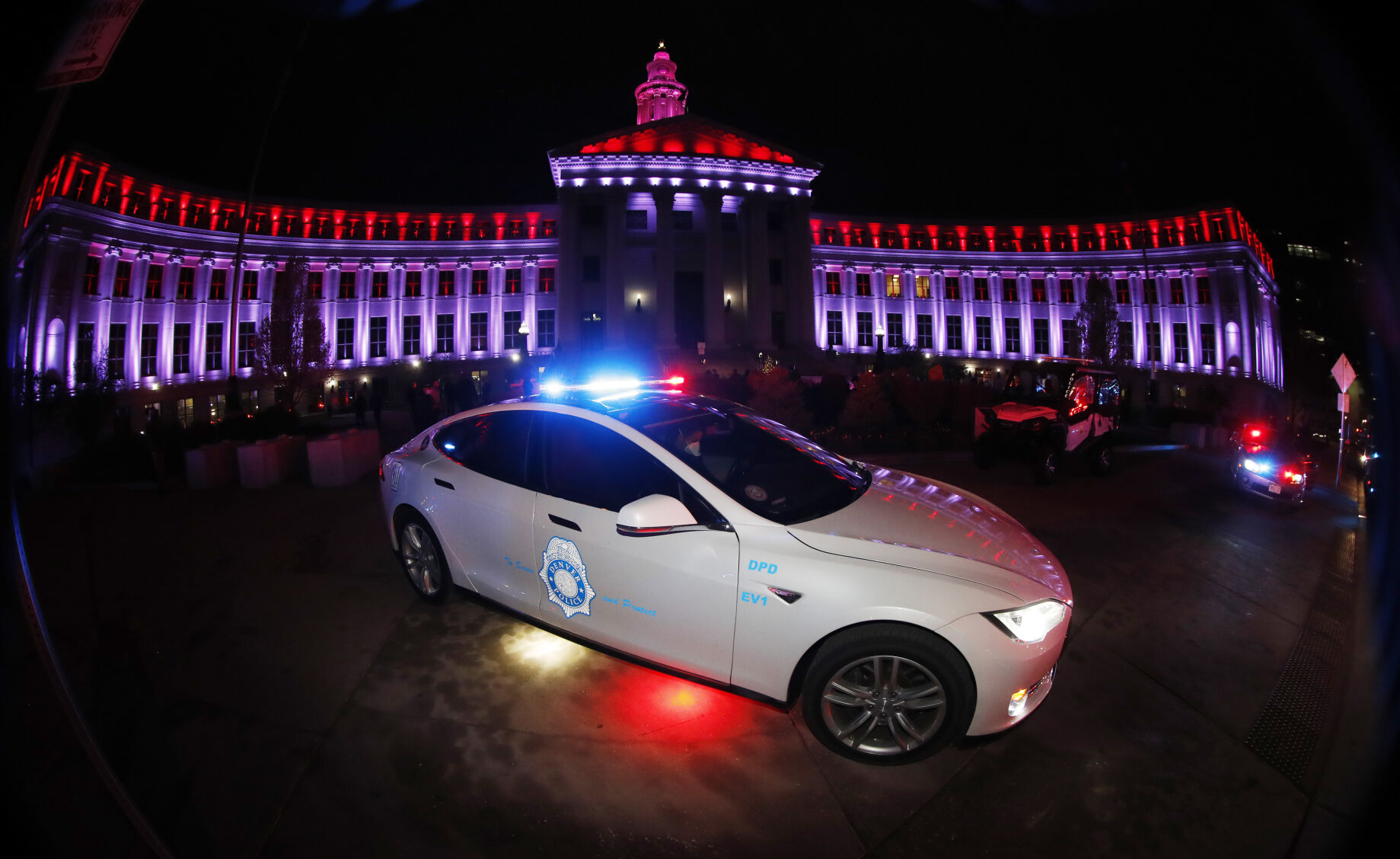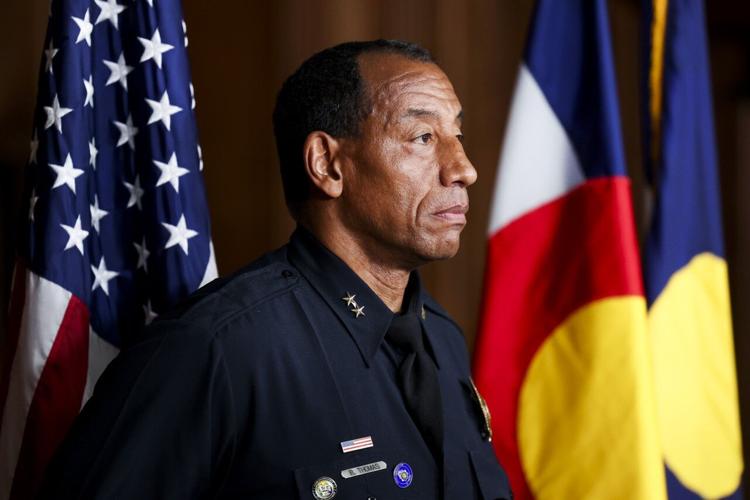Denver residents express desire for increased police presence, fear crime at night, survey shows

FILE PHOTO: A Tesla police car sits in front of the City/County Building in April after red and white lights were illuminated to show support and gratitude for first responders and medical personnel. A recent survey showed Denverites see homelessness and an increased police presences as top public safety issues.
The Associated Press
Denver residents want more police on the street, fear crime at night and see homelessness as the city’s primary public safety issues, according to a survey released by Seattle University on Thursday.
The survey asked more than 6,000 people who live and work in all of Denver’s neighborhoods to evaluate safety in the city and the effectiveness of the Denver Police Department.
With an overwhelming majority, the survey found almost half of respondents listed police capacity — the number of officers in the department and on the streets — as their number one public safety concern. That was followed by property crime, homelessness, traffic safety and community and public safety capacity. Fears over crime appear moderate in the day, but they spike once the sun goes down.
The survey found that during daylight hours, the fear of crime in Denver was scored at about 45 on a scale of 0-100. That number jumps to almost 55 after dark.
That perception may not fairly reflect reality, Denver Police Chief Ron Thomas said in an interview with The Denver Gazette.
The city has actually seen “significant reductions” in crime, he said.
“One thing that lends itself to the perception of high crime is some of the social issues and community issues, whether it be individuals that are unhoused, or blight,” he said. “I think we have our officers in the right places at the right times, but sometimes I think their actions are difficult to observe and identify.”
The Denver Police Department also highlighted its own survey results, which uses the SPIDR Tech customer service survey, an automated text-based update service the department began using in November of 2023.
So far, the department has received over 85,000 responses.
Thomas expressed pride in those results, highlighting that well over 70% of respondents reported their issue resolved and almost 80% were satisfied with the professionalism of the police department.
“What we we’re really looking for is the voice of the people and so one of the things that that was telling was that people really wanted to see our (officer) capacity increase,” he said. “That’s something we are moving towards with the mayor’s goal of hiring 167 officers in 2024 and that’s going to go a long way towards increasing our capacity.”
Another metric of the survey was “police legitimacy.” In a “perfect scenario,” the value would be 100, Denver Police scored 57.6. Researchers called it “high-moderate” legitimacy.
The Seattle Police Department, which the university also studied, only managed a score of 38.7, described as “low-moderate” by researchers. The study had 11,000 respondents.
“(Researchers) define police legitimacy as ‘an acceptance of the rules, laws, and precepts that define the police role in society, and a willingness to grant deference to police as a consequence of the belief that they are the authorized representatives who dutifully carry out the rules and laws that make society function smoothly,’” the survey said.
One of the results from the Seattle University survey surprised Thomas – the focus on traffic safety.
Mayor Mike Johnston recently announced a new program that officials said would address issues of traffic safety throughout Denver. That program will utilize technology, such as speed cameras and flashing speed limit signs.
This can play into how police develop neighborhood safety plans, Thomas said. For police, these technologies can be a “force multiplier,” he said, enabling officers to go into neighborhoods where trust is low.
“There are opportunities to do community engagements, so that we can foster a better relationship with those communities,” he said. “(We need to) make sure that we’re using data and community information to direct our patrol activities throughout the day and night.”





